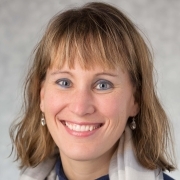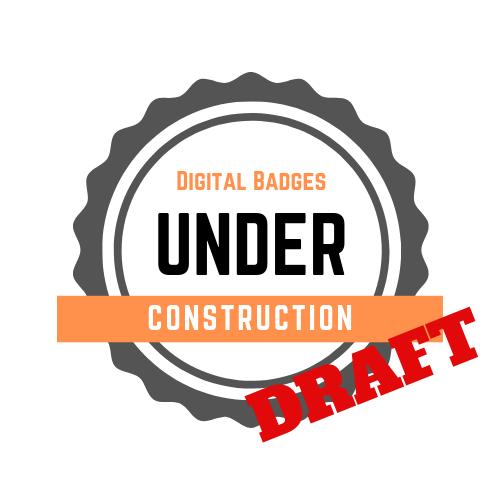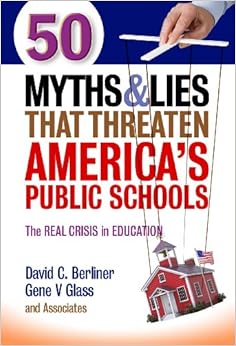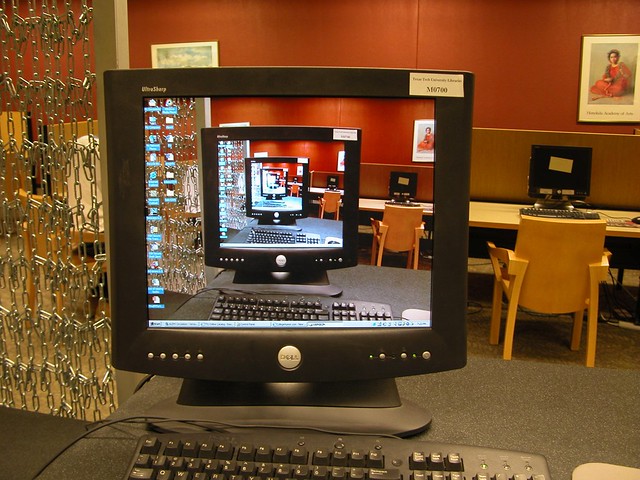Introduction
With the midpoint of the summer and the July 4th Holiday weekend in the rear view, and states (like our own home of Michigan) now releasing plans for a “safe return to school” in August, we feel it is worth taking time to pause.
As parents and teacher educators, as well as long-time colleagues and friends, the two of us have had many conversations in the past month as educators in the state of Michigan and around the world have moved to “remote learning” in K-12 and higher education.
In thinking about ways we can productively talk about complicated issues, we have been informed by our experiences in the National Writing Project, and the use of protocols, or guided discussion models, for moving forward through difficult conversations.
In a recent chat, we used the “What? So What? Now What?” protocol to share our thoughts and feelings related to “pandemic pedagogy,” “getting remote learning ‘right,’” and other phrases that capture the COVID-19 zeitgeist.
This blog post summarizes our current thinking and, we hope, will serve as a time capsule for questions we need to ask in the weeks, months, and years ahead.
What?
Humans, by nature, want to help others. Our willingness to do so is, most often, well-intentioned. Since the outbreak of COVID-19 and both higher education and K-12 schools moving to “remote” instruction, there have been a number of companies that have offered their products for free (or at reduced cost) so that teachers and students can use them. Moreover, professional organizations have shared K-12 resources through blogs, podcasts, webinars, lesson plans, and countless social media posts. We believe teachers and their students are doing the best they can, given the circumstances. We also trust that parents and guardians are doing the best they can. Humans are navigating uncertain futures and as we do so, we must help ourselves and our children navigate what is, indeed, a brave new world.
That said, in the past few months — and even more so in as we reflect on “remote learning” successes and failures from the end of the 2019-20 academic year — there have been hundreds, if not thousands, of such resources that have been distributed to support a “continuity of learning.” Again, all well-intentioned, and many useful.
However, when we see headlines like “getting remote learning right” or “successful strategies for online teaching,” we wonder what “right” or “successful” (or, for that matter, “teaching”) even means. While we do have empirical evidence about “what works” for nearly all students in typical school settings (e.g., IES What Works Clearinghouse), which are still in and of themselves contextual, we don’t yet know what works for all teachers and students when teaching and learning remotely. We also don’t yet know the full impact of social distancing on teachers’ and students’ learning and emotional well-being.
We are left with many questions, few answers, and a great deal of uncertainty.
So What?
Despite the terrible, tragic circumstances in which we find ourselves, one of the silver linings, perhaps even a gift, of this pandemic for educators — if we dare call it a gift — is the opportunity to re-think what has been considered the standard parts of teaching and learning for decades, if not centuries. As educational professionals, if we want to take advantage of what we’re learning and experiencing in this COVID-19 era, we must be willing to ask (and, eventually, answer) some important questions. So, as we consider the days, months, and years ahead, we believe that it will be imperative to create time and space for conversations about what we’ve experienced and learned.
In other words, as the world is experiencing a pandemic, what is “right” or “successful” for one remote school or class may not actually be “right” or “successful” for another. And, we believe that part of getting it “right” — or achieving “success” — extends well beyond the immediate needs and outcomes of the upcoming 2020-21 academic year.
Indeed, the ways we prepare ourselves for 2020-21 matters in many, many ways. Thus, framing questions for the conversations we have now — both about what we’re experiencing and learning as well as how we can use what we learn to help us move forward in the future — is critical.
Now What?
As noted above, there are already countless resources available for remote teaching and learning.
We are not dispensing more advice or resources in this post. There are so many of us — individual teachers, entire school faculties, district administrators, teacher educators, policy makers, the business community, and, of course parents and caregivers of our youth — all of whom have questions. And, we’re all trying to figure things out.
Instead, we want to pivot and pose some questions that, right now, can’t be fully answered here as we are still trying to plan for August. Whatever happens in a few weeks, when schools “re-open” for the fall, we know that it will still be an era of pandemic pedagogy.
In fact, we consider this a “time capsule” of sorts, and these questions, we hope, can guide our own thinking as well as our PK-12 and higher education colleagues as we transition into a post-COVID, socially un-distanced world. Whether we are face-to-face, online, or both — and whether we are talking about one day of instruction, one week, one month, or a whole year — we wonder…
For educators:
- What is essential for your students to learn, in terms of content and skills?
- What is essential for your students to do as they learn to communicate with one another?
- What were the “rhythms” of the school week for each of you? What was the workflow? When did you meet with students? How did you support students’ emotional and academic needs?
- What communication media (text, image, video, audio), methods (through an LMS, via text message, via email), audiences (one student, small group, whole class), and frequency (hourly, daily, weekly) are effective?
- What content needs to be “delivered,” asynchronously, and what, instead, might need to be “modeled” and “coached,” synchronously?
- What should be the [new] norms of online meetings with students?
- In this time of remote learning, what practices have you developed that could be carried forward, in hybrid or fully online courses?
- What have you learned about yourself, your teaching style, and what you really value as an educator?
- How might this entire experience frame your pedagogy and practice moving forward?
- How much synchronicity is necessary? For full classes? For small groups? For individual tutorials?
- What ways did you see students be creative as they developed their thinking and expressed what they learned? How might they have used “old” and “new” technologies to meet these goals?
For administrators:
- What worked best for communicating with your staff? For providing feedback and direction? For maintaining relationships and supporting one another?
- What might have worked well in the past for organizing faculty meetings, curriculum, assessments, PLCs, etc.? How did these change and, perhaps, become more [or less] efficient?
- For online meetings with other adults/colleagues, what norms did you establish and how did these facilitate communication and teamwork?
- Based on your experiences supporting teachers during remote teaching and learning, what changes do you hope/expect to make when you return to brick and mortar buildings and classrooms?
- How did you partner with and/or support students and their families?
- What success(es) should be celebrated?
For business and community members:
- In our efforts to create a 21st-century workforce — and with the changes that have been made in your places of work over the past two months — what should educators know about what it means to prepare their students for the workforce in months and years ahead? Given potential past efforts connected to volunteerism and mentorship opportunities for employees to work with K-12 students, what might you need to reconsider when planning for future opportunities?
- Even in light of the economic impact that all businesses are sure to face, what role do we all play in providing equitable access to broadband or mobile internet, as well as low-cost laptops or devices for family use, both for K-12 students as well as their caregivers who may be reskilling for a new job?
- What new partnerships could be developed with local K-12 schools to support students’ learning and connect their learning to the community?
For higher education faculty, administrators, and teacher educators:
- How do we effectively prepare preservice teachers for all the realities of teaching and learning, including future remote teaching and learning?
- How can teacher educators clearly model high-leverage teaching and learning practices for preservice teachers?
- How can colleges/schools and departments of education more directly support our communities’ schools, including their teachers and students as well as parents and caregivers?
- How can we better advocate for and partner with local K-12 districts and schools when integrating technology?
- What new partnerships, programs, and models could be forged to partner universities and K-12 schools (e.g., traditional models of student teaching and field placements, dictating required observation/teaching hours, etc.)?
For parents, guardians, and caregivers:
- What are your children passionate about? How did you help them follow those passions in this time of staying home and staying safe?
- On the flip side, what led our kids to distraction (and/or ourselves)? What did we do to help them learn and/or practice self-regulation and to follow their interests?
- What kinds of topics, subject areas, and questions did they follow?
- What did you notice about their use of various learning technologies and modalities such as video, audio, and text, as well as virtual interactions with others?
- How did you and/or your child[ren] process the “loss” of the remainder of the school year?
- What do your children need as they head back to a regular school building and schedule, whenever that might be?
- What do you, as a parent/guardian, need as you send your child[ren] back to a regular school building and schedule, whenever that might be?
- What was most helpful, in terms of the way(s) your school/district responded to the COVID-19 pandemic?
- What was least helpful, in terms of the way(s) your school/district responded to the COVID-19 pandemic?
For legislators:
- What laws perpetuate inequality for public education and how can we change these to ensure all students have access, no matter the location of learning and/or the modes/methods?
- What needs to change, at the state and/or national levels, so that K-12 administrators and educators can quickly and effectively respond to current needs and environments, including the need for remote teaching and learning?
- What role does technology play in providing “equal access for all” K-12 students?
- What do you need/want to learn from K-12 teachers as well as their students and families about their experiences with remote teaching/learning during this crisis?
- Beyond increasing teachers’ pay, how might we recognize the contributions that educators and schools/districts made to students’ learning, both intellectual and socio-emotional, during this difficult time?
- What can we do to recruit new teachers to join/stay in the profession, and prepare them for new modes of instruction?
- What can we do to keep current teachers in the profession and how can we prepare and support them for new modes of instruction?
(A Few) Essential Questions as We Move Forward
These are a lot of questions and necessitate conversations over time. As we conclude, we close with a few questions for us all:
- What might a typical school day (week) look like in the years ahead?
- How might we build remote/online learning into our normal patterns of work?
- How will we maximize synchronous learning times, whether face-to-face or remote?
- What content can be “delivered” asynchronously and what platforms/delivery works best for asynchronous delivery?
- How will we engage all students in substantive learning, inviting them to create — and not just consume — content?
These are more questions, we know, than can be answered right now. However, in addition to responding and reacting to immediate needs and contents, we must also deliberately think about what we’re doing, why we’re doing it, and its impact on students’ learning and development.
We are, indeed, in the midst of a pandemic pedagogy and while we’re all hard at work, our success and ability to “get it right” depends not only on what we do right now but also what we do moving forward.
We hope you’ll consider joining the conversation that these questions invite.
 Dr. Erica R. Hamilton, Grand Valley State University, Grand Rapids, MI
Dr. Erica R. Hamilton, Grand Valley State University, Grand Rapids, MI
Erica R. Hamilton works with pre-service and in-service teachers and serves as a K-12 teacher coach and professional development provider. Erica’s teaching focuses on helping teachers support and extend K-12 students’ literacy and learning. Committed to professional service, Erica currently serves on GVSU’s Online Education Council and GVSU’s IRB committee. She is a peer reviewer for various journals and organizations and is active in West Michigan schools. Her research interests focus on teacher learning and professional development, place-based education, literacy, and educational technology. Connect with her on Twitter @ericarhamilton.

Dr. Troy Hicks, Central Michigan University, Mt. Pleasant, MI
Dr. Troy Hicks is Professor of English and Education at Central Michigan University (CMU). He directs the Chippewa River Writing Project and, previously, the Master of Arts in Learning, Design & Technology program. A former middle school teacher, he collaborates with K–12 colleagues and explores how they implement newer literacies in their classrooms. Since beginning work at CMU in 2007, he has earned numerous distinctions including the Michigan Council of Teachers of English Charles Carpenter Fries Award (2008), CMU’s Provost’s Award for junior faculty who demonstrate outstanding achievement in research and creative activity (2011), the Richard A. Meade Award for scholarship in English Education (2014), the Michigan Reading Association’s Teacher Educator Award (2018), CMU’s Excellence in Teaching Award (2020), and the Initiative for 21st Century Literacies Research’s Divergent Award for Excellence (2020). An ISTE Certified Educator, Dr. Hicks has authored numerous books, articles, chapters, blog posts, and other resources broadly related to the teaching of literacy in our digital age. Follow him on Twitter: @hickstro
Photo by Charles Deluvio on Unsplash

This work is licensed under a Creative Commons Attribution-NonCommercial-ShareAlike 4.0 International License.


 This past fall semester provided me with an opportunity to teach an undergraduate honors seminar, focused broadly on the role of technology in our personal and professional lives.
This past fall semester provided me with an opportunity to teach an undergraduate honors seminar, focused broadly on the role of technology in our personal and professional lives.

 As teachers and teacher educators prepare for a variety of workshops, conferences, webinars, institutes, and other events this summer, I am pleased to share a timely publication I’ve co-authored with Misty Sailors of the The University of Texas at San Antonio: “
As teachers and teacher educators prepare for a variety of workshops, conferences, webinars, institutes, and other events this summer, I am pleased to share a timely publication I’ve co-authored with Misty Sailors of the The University of Texas at San Antonio: “



